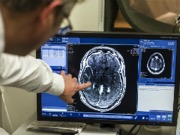By Shen Gao
Staff Writer

A team of doctors at Sunnybrook Health Sciences Centre in Toronto, Canada, has successfully breached the blood-brain barrier for the first time, allowing the delivery of chemotherapy drugs into affected regions of the brain of a patient.
The blood-brain barrier is a barrier between the bloodstream and the brain tissues. It is formed by endothelial cells which act as a selectively permeable barrier that only allow the most crucial molecules to pass. Connected by tight junctions, their cells allow water, oxygen, glucose, and some lipid-soluble molecules to pass through by the process of passive diffusion.
Typically, the blood-brain barrier acts as a protective shield against harmful molecules in the bloodstream, preventing them from entering brain tissues and the central nervous system. However, in the cases of brain tumor treatments, this seemingly natural defense actually acts as a hindrance to effective treatments of brain tumors. Many drugs administered into the blood of a patient fails to reach the brain because of this.
The method which the doctors used to breach the blood-brain barrier is no less than groundbreaking.
The team delivered chemotherapy drugs to the bloodstream of a patient with a malignant brain tumor. Subsequently, microbubbles smaller than red blood cells were infused through and passed through the patient’s blood circulation. Doctors then used MRI-guided low-intensity ultrasound in the affected areas of the patient’s brain, targeting the blood-brain barrier by the tumor.
The sonication caused by the ultrasound interact with the air bubbles, compressing and expanding them, causing them to loose the junctions between the endothelial cells.
When the barrier was temporarily opened, the chemotherapy drugs flowed through successfully.
“This technique will open up new opportunities to deliver potentially much more effective treatments to the targeted areas,” said Dr. Todd Mainprize, an Assistant Professor in the Division of Neurosurgery at the University of Toronto.
Within a day after this procedure, the tumor and some surrounding tissues were extracted surgically to be analyzed – the differences in the concentration of chemotherapy were measured, in order to get an idea of how effective this treatment truly was.
It is believed that with the success of this procedure, doctors may explore more options to better treat other illnesses associated with the brain, like Alzeimer’s disease and some psychiatric conditions.

















